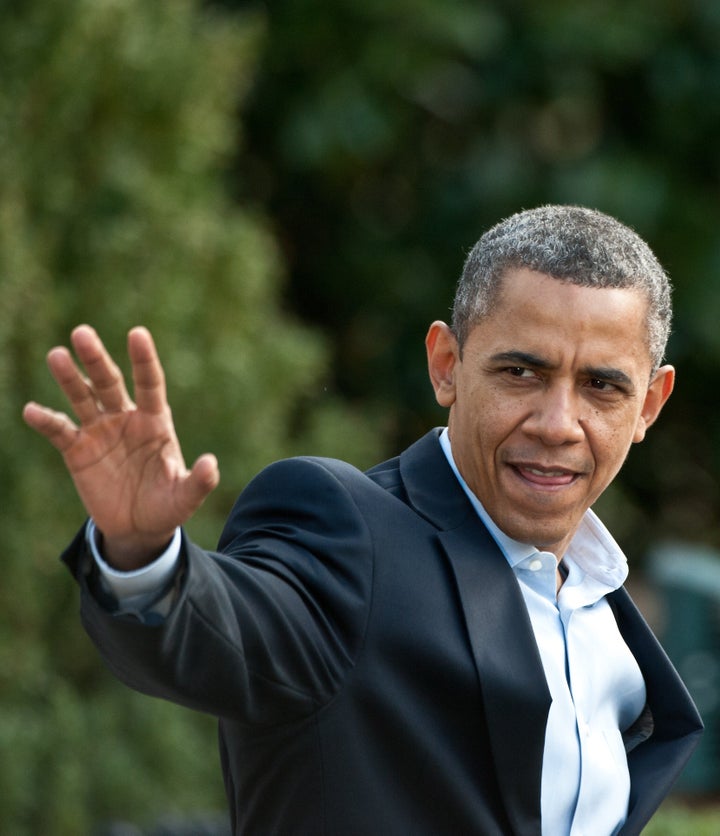
This September, Bob Maranto and I published a book reviewing the first years of the Obama presidency that deemed President Obama an education reformer. In fairness, we added a healthy number of qualifiers, but I believe Nathan Glazer was accurate in his review in stating that, on balance, we gave the Obama administration's efforts through Race to the Top and other reforms about a B+. Since that time, President Obama has introduced some new policies -- namely NCLB waivers -- that have caused me (I don't want to speak for Bob) to view his reform credentials with a bit more skepticism. But all in all I stand by our thesis that an Obama presidency has moved the center of gravity on education in the Democratic Party in the direction of reform.
I have to say, though, that there were moments in the campaign when the president made me a little nervous that Bob and I had gotten him completely wrong.
It all started with class size. Rather than recognizing the familiar call for class size reduction as means of increasing student achievement as the canard it is (like his Secretary of Education did during a speech at AEI) Obama started to fall back on those tired talking points. In the third debate, he even said to Governor Romney "when you were asked about reduced class sizes, you said class sizes don't make a difference. But I tell you, if you talk to teachers, they will tell you it does make a difference"(for those of you keeping score at home, it doesn't). He even made a commercial about it.
Then it was hiring more teachers. While at the same time his Race to the Top-District program was calling for ways to increase the reach of effective teachers, President Obama stumped for the hiring of 100,000 new Math and Science teachers. Where are we going to get them from? Not sure. How are we going to ensure their quality? No idea. Was this really just a way to sell a big job programs to a skeptical electorate? Quite possibly. Rather than joining the rest of the reform community in talking about strategies to leverage teachers in new ways or even touting his own achievements in increasing the reach of teachers through technology, he gave the same answer Democratic presidential campaigns (both real and fictional) have given for decades: just hire more.
But the question is: were these seemingly uncharacteristic positions simply a campaign strategy to shore up his base during a close election, or are these the types of policies we can expect from a second term?
My guess is that the fiscal constraints under which the second term of the Obama administration will operate will prevent him from being able to enact either of those policies, whether he wants to or not.
State budgets are constricting and I'll eat a pinecone if there is another wholesale bailout of states in the next four years. Thus, the federal government will most likely have very little to say about the size of classes around the country. Sure, from the bully pulpit President Obama might decry the situation, but without being able to infuse states with the huge amount of money needed for large scale class size reductions, there is little he will be able to do about it.
The same goes for hiring more Math and Science teachers. There is simply no money to do this. The looming fiscal cliff could lead to cuts in Title I and special education funding of over $2 billion, leading the Secretary of Education to believe that over 25,000 teachers will lose their jobs. With that threat impending, there is little reason to think that across-the-board increases in the number of teachers in America are anywhere in our future.
It looks like rather than ground-shaking game-changers, the upcoming months and years of federal education policy will be spent dealing with the nitty-gritty issues of sequestration, the managing of NCLB waivers, and implementation of Race to the Top reforms (including the Common Core). While clearly better than the ideas offered during the debates, it does appear to mark a slowdown in what could have been a real Nixon-goes-to-China opportunity to take on the education establishment. But, when Obama ran in 2008, he never mentioned Race to the Top, or the $100 billion in stimulus money he would eventually send to states to stave off widespread teacher layoffs, so who knows what the future may hold.